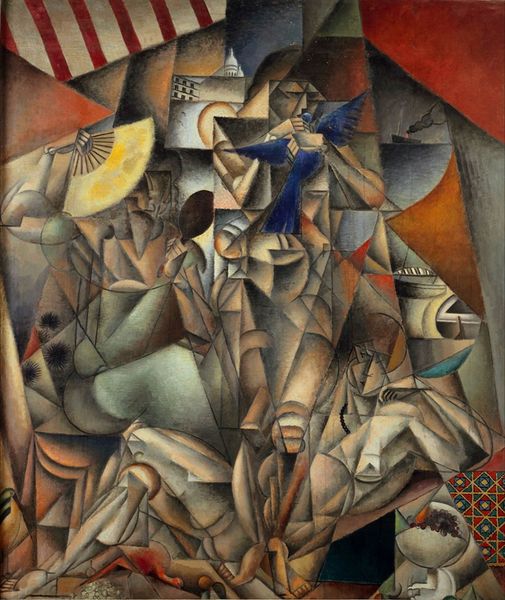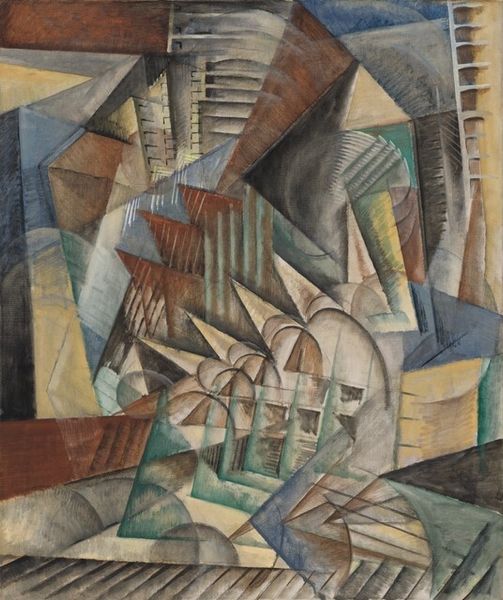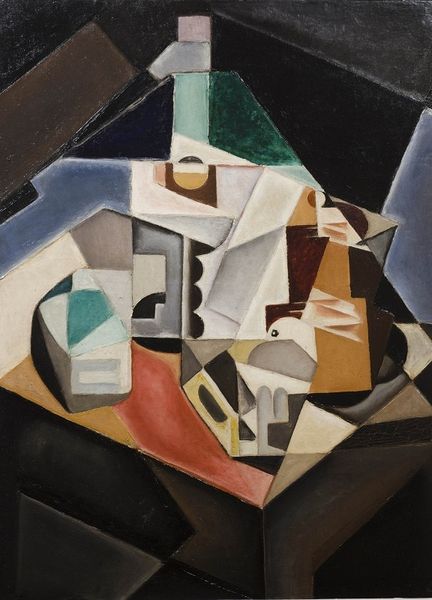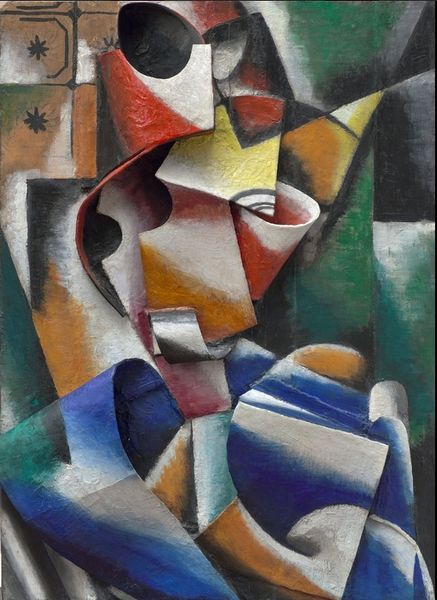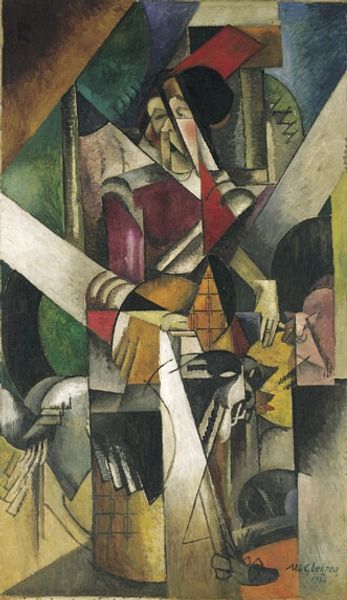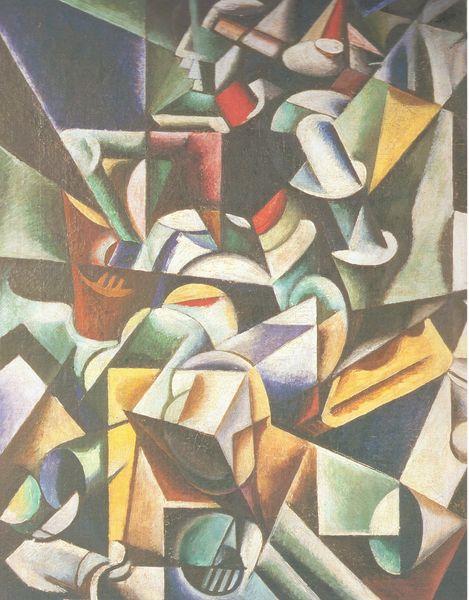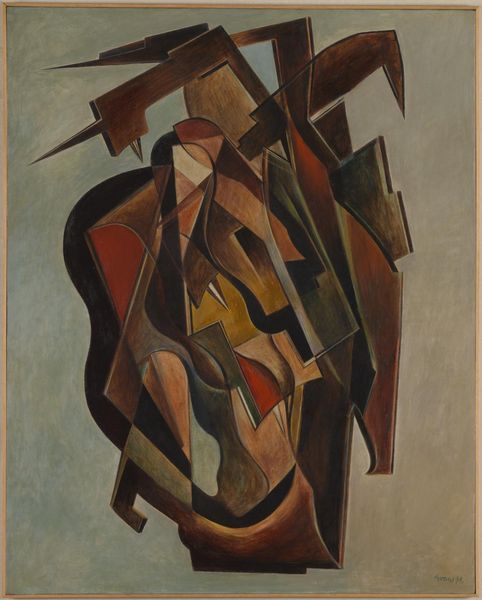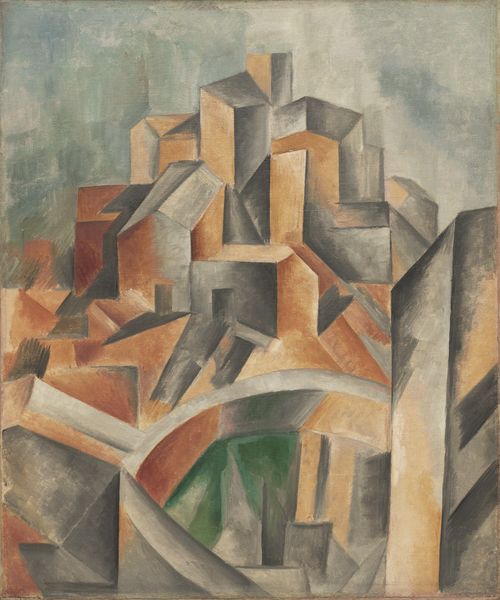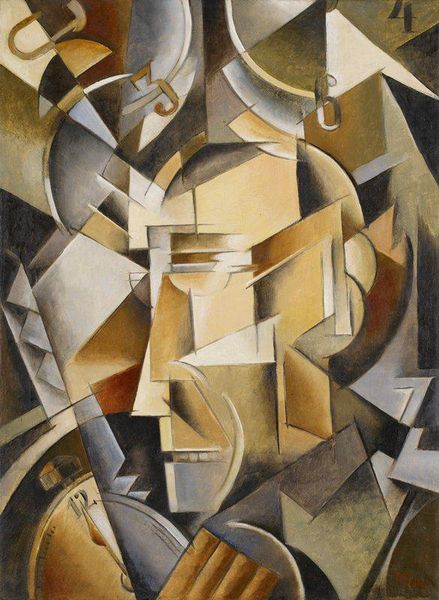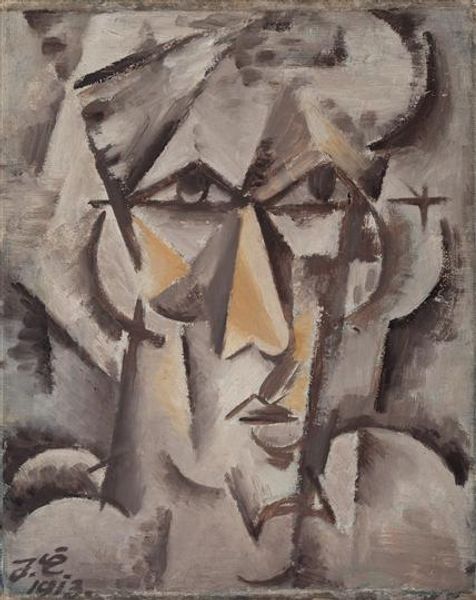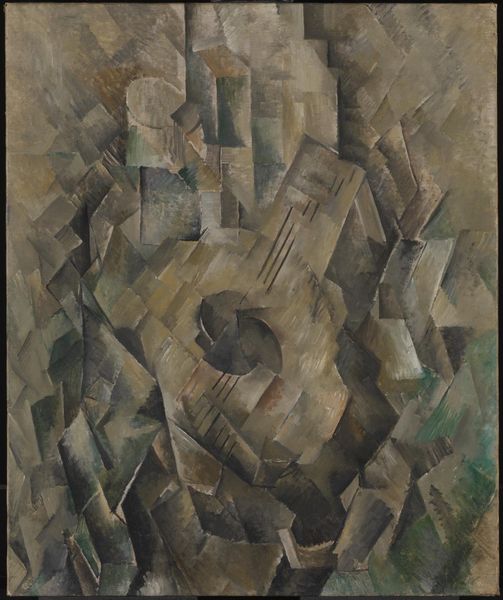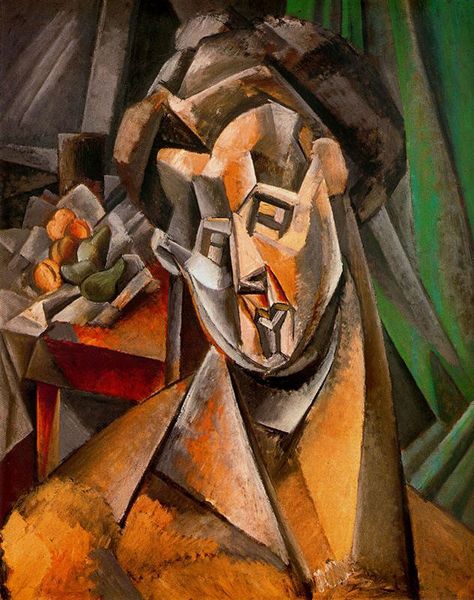
oil-paint
#
portrait
#
cubism
#
oil-paint
#
charcoal drawing
#
oil painting
#
geometric
Copyright: Public domain US
Editor: This is Picasso’s "Femme Assise," painted in 1909 using oil paints. It's...fragmented, isn't it? I see shapes where a person should be, and muted colours. What do you make of this piece? Art Historian: Indeed. Observe the artist's meticulous application of paint to construct planar surfaces. The interlocking forms do not simply represent a figure but actively participate in constructing the picture plane itself. Editor: So, it's less about representing a person realistically, and more about how the shapes and colours work together? Art Historian: Precisely. The almost monochromatic palette and fractured forms eschew conventional mimetic representation, and force us to examine the underlying structure. Consider the subtle gradations of tone—how do they contribute to your perception of depth and volume despite the flattened perspective? Editor: I guess the shading creates a sense of three-dimensionality, even though the figure is broken up. It’s almost like a puzzle... were his contemporaries as confused by this style? Art Historian: No doubt some were challenged by such radical departures. This Analytic Cubist style represents a critical moment in the development of modernism. Here we see art investigating its own representational methods, stripping them bare and presenting the very language of painting for our inspection. Notice how Picasso avoids the use of a single-point perspective; instead he has fragmented it with the lines, textures and neutral hues of green, white and tan. What implications does this structural rendering yield for the semiotic breakdown of subject, the sitter? Editor: I hadn’t thought about it as language, but now I get it. It’s less about *who* she is, and more about *how* Picasso has constructed her image using paint. That really changes how I look at it. Art Historian: Precisely. One departs, enriched by having encountered the object in its complexity, where our perspective shifts due to the careful orchestration of forms, rather than merely seeing the depiction of something we already know.
Comments
No comments
Be the first to comment and join the conversation on the ultimate creative platform.
